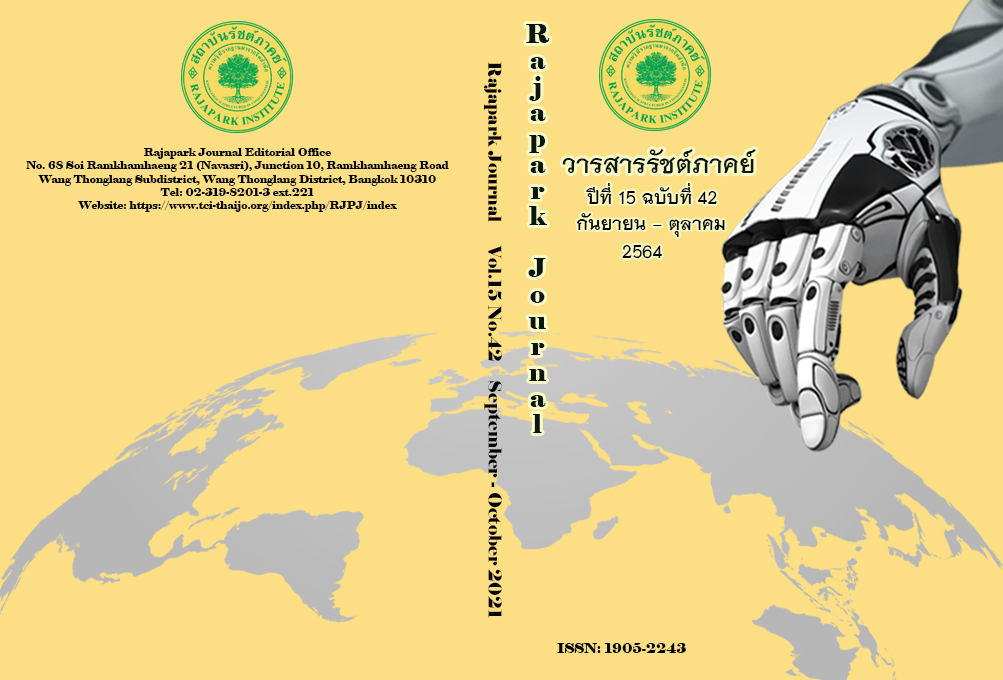Defining of Online Violence: A Case Study of Chulalongkorn University Students
Main Article Content
Abstract
This qualitative research proposed two objectives: 1. To study how Thai youth perceive and define online violence and 2. To examine gender differences found in online violence experience. Twenty-one Chulalongkorn University students, age range from 18-23 years old, of all gender participated in this research. Data collection was gathered through online interviews, were selected and analyzed by using the intense content analysis. The results showed that the description of online violence was defined as expressions of words or actions that affect a person’s feelings and emotions, seen in form of disparagement, and privacy invasion. Moreover, the results showed each gender experiences online violence differently. In conclusion, this study serves as a preliminary study that could shed light for future researchers to design, explore, and create a more in-depth understanding of online violence in different Thai youth groups and encourage a more up-to-date online violence prevention strategy.
Article Details
Views and opinions appearing in the Journal it is the responsibility of the author of the article, and does not constitute the view and responsibility of the editorial team.
References
Council of Europe. (n.d.). Cyberviolence. Retrieved November 16, 2020, from https://www.coe.int/en/web/cybercrime/cyberviolence#{%2250020850%22:[1]}
David-Ferdon, C., & Hertz, M. F. (2007). Electronic Media, Violence, and Adolescents: An Emerging Public Health Problem. The Journal of Adolescent Health, 41(6 Suppl 1), S1–S5. DOI: 10.1016/j.jadohealth.2007.08.020
Hinduja, S., & Patchin, J. W. (2020). Bullying Cyberbullying and LGBTQ Students. Cyberbullying Research Center. Retrieved May 24, 2021, from https://cyberbullying.org/bullying-cyberbullying-sexual-orientation-lgbtq.pdf
Intarajit, O., & Karinchai, N. (1999). Domestic Violence Against Thai Women & Children: A Hotline Psychological Study. (n.p.): Pokklao Printing.
Mackenzie, W. J. M. (1975). Power, Violence, and Decision. England: Penguin Books.
Patton, D. U., Eschmann, R. D., & Butler, D. A. (2013). Internet Banging: New Trends in Social Media, Gang Violence, Masculinity, and Hip Hop. Computers in Human Behavior, 29(5), A54–A59.
Thianthai, C. (2018). What Does Social Media have to do with Health? A Case study of Bangkok Youths. International Journal of Adolescence Medicine and Health (IJAMH), 33(1). https://doi.org/10.1515/ijamh-2018-0058
Thianthai, C. (2020). Effects of Online Social Media on Thai Social and Cultural Changes from an Anthropologist’s Perspective. Faculty of Political Science, Chulalongkorn University.
Vandebosch, H., & Van Cleemput, K. (2008). Defining Cyberbullying: A Qualitative Research into the Perceptions of Youngsters. Cyberpsychology & Behavior, 11(4), 499-503. DOI: 10.1089/cpb.2007.0042
Web Foundation. (2021). How Online Gender-based Violence Affects the Safety of Young Women and Girls. Web Foundation. Retrieved May 19, 2021, from https://webfoundation.org/2021/03/how-online-gender-based-violence-affects-the-safety-of-young-women-and-girls/
World Health Organization [WHO] (2002). World report on violence and health. Geneva: World Health Organization.


